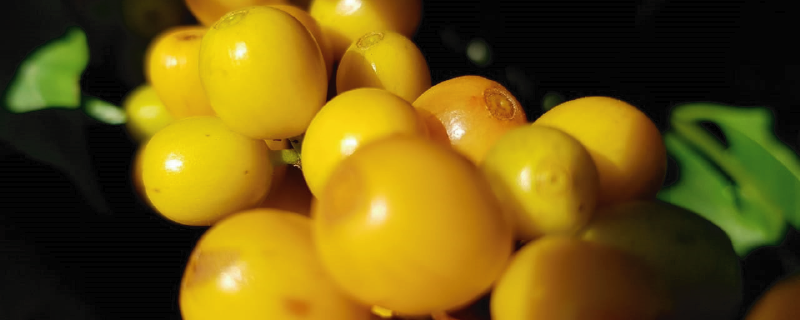To share Clayton’s story, we first need to tell the story of the Mapelli family. It started back in 1888, when three Italians came to Brazil by ship and arrived at the Port of Santos (São Paulo) on November 14, 1888. One of them was Luigi Mapelli, Clayton’s great-grandfather. During his first month in Brazil, they stayed at the “Hospedaria dos Imigrantes”, in Santos. After some time, they were invited to work at Santa Cândida farm, in São José do Rio Pardo, and shortly after, in Caconde, a neighboring city.
There, Luigi met Vírginia Passoni, another native Italian. They got married in 1896 and had a total of 14 children. A short while later, they became settlers in the coffee plantation at Santa Alina farm, located in the municipality of Grama, in São Paulo, Brazil. They worked there for about 15 to 20 years and saved as much money as they could. Consequently, they were able to buy the Forquilha farm, located at the highest point of the municipality of Grama. After some time, they also bought some land at the Anhumas farm.
In 1954, Clayton’s grandfather bought the Nascentes da Grama farm where the family resides and produces coffee until today. There you may find many people from the Mapelli family who were born and raised there. Currently, there are about 40 to 50 small farms and properties belonging to the family. That was how the family’s 133 year-old history with coffee began.

The Mapelli family has been at Nascentes da Grama farm for 67 years. Its altitude ranges between 1,000m to 1,350m. Because their house was so big, a part of it was turned into a small market area, where people would go to barter (exchange goods). Nowadays, after being restored and transformed, the space serves as a kitchen. The property also has a charming little church, which was built in 1935 by the same group of Italians who built the city’s hospital and some churches around that region. Back in the day, Clayton’s mother, Elma Cecilia Mapelli, used to teach catechism classes at this very same church.
In addition to coffee, some other trees were planted around the property to create a wind curtain and prevent diseases from reaching the coffee trees and some avocados. These trees also provided shade and an extra income to the family. In the past, the spacing of coffee trees in plantations was much larger — something between 3.5m by 2.5m and 4m by 2m. The trees were also not very tall. Today this has changed, and the maximum spacing is now 3m by 2m. As new, exceptional coffee (such as ubatã and macaw) emerged across the years, Clayton decided to plant a few of them to try them out on his property. Today, the vast majority of the farm’s coffee has a natural process. They do not use the “peeled cherry” method due to how helpful the climate in that region is — there is no fog and it is usually dry, which allows for a completely natural process.
All told, Clayton’s family owns three properties in the municipality of Grama, each of them with different altitudes: 900m, 1000m and 1200m. They help with their performance at coffee contests, considering that in some years the coffee from one farm might come out better than the other farms. Clayton is always testing and tracking all his coffees, which results in an average rating ranging between 82 and 84 points. In 2020, their coffee received 87 points and, in 2019, it received a total of 90 points, their best score ever, so far. This was only possible due to their dedication and commitment to tracking their coffee. From the flowering stage, which takes place between August and September, to the moment of harvesting, which takes up to 9 months until the fruit is sufficiently ripe. Clayton says that if they do the harvest earlier than that, there will possibly be a lot of green fruit, and if they wait too long, it will become very dry, start fermenting and go bad. That is why, in order to improve his coffee quality, he pays close attention to all stages of the process.
Clayton explains that, in the past, his grandparents’ would unintentionally let the process of coffee fermentation happen — they were not aware of it. Today they perform aerobic and anaerobic fermentation, but in a smooth way. Their coffee already presents good quality, due to the region where it is planted, and has already won many awards as it is. Therefore, they prefer not to change its natural characteristics too much.
When it comes to his contribution to his community, it is worth mentioning that Clayton has been a member of the Vale da Grama Coffee Growers Association (ACVG) ever since it was founded, in 2003. The ACVG, together with producers, fosters the promotion, rationalization and development of coffee trading activities, as well as advertisement and market search. It is composed of about 30 coffee producers who meet, exchange experiences and share the successes and challenges they face at their plantations. Together, they managed to set up a tasting room with high-quality equipment, which cost around R$100.000. All of this investment aimed to refine the coffee produced, not only by the Mapelli family but all the producers in the region.
The ACVG also plants and distributes Moringa Oleífera trees, which has many benefits. It is one of the fastest growing trees in the world and its leaves have as many proteins as a steak. Its dry, macerated seeds can clean up about 90% of the water. In 2020, they planted more than 1300 trees of this species and distributed many seedlings. It does not generate any waste, since they have built some septic tanks to treat sewage in their properties. The plastic waste is collected by the city, and the rest of the food goes to the farm pigs and chickens.
The chemical residues used in produced coffee are also a concern for Clayton. He makes use of the Biobed system, Embrapa technology, which consists of 200-liter barrels with two layers of soil and grass planted on top. These barrels make the same system as the soil, where the grass drains the water and performs photosynthesis, but in a closed drum so that there is no leakage and contamination of water tables, including the water that is used on the farm and in the surrounding regions. All chemical residues, like the ones in the water used to wash the coastal pumps, are poured into these barrels, preventing contamination of the soil.
The property is surrounded by many trees, which impedes the approach of animals, such as oxen and chickens. Besides that, the plantation area is far from the house and all river banks where the stream flows down are protected. The water that the entire city consumes comes from within his property. So, because he knows the importance of preserving water, he not only wants to save it for his family, but for everyone.
Talking specifically about the Catucai cultivar, its coffee plant has already been planted at an altitude of 1160m, one of the highest places of the farm region. It works with the zero crop system, as long as the field is divided. Only half the production is pruned, therefore every year there is half a harvest. This way, there is no running out of coffee, except if it is damaged by frost, fire or a strong drought. His objective is not to fail serving the customers, even if with only 50% of the production. Clayton works the same way in all his properties to ensure that at least one of them provides the necessary coffee to keep the customers.



